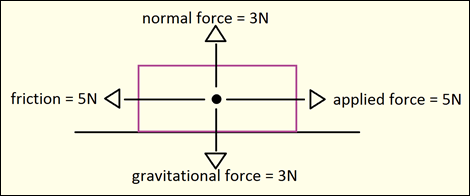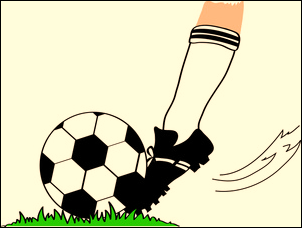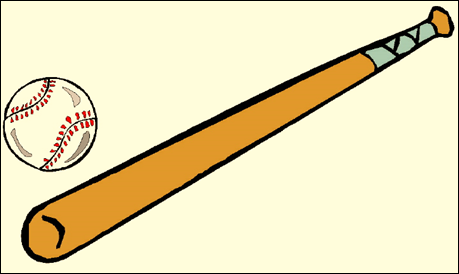DYNAMICS
Unit Introduction
This unit covers aspects
of dynamics as it relates to motion under the actions of forces.
What are Dynamics?
The concept of dynamics
can be thought of as any motion and how forces affect that motion. In order to
comprehend dynamics, you must first have an understanding of balanced and
unbalanced forces and their effects on motion.
Balanced and Unbalanced Forces
By definition, balanced
forces produce no change in an object’s motion. If you draw a force
diagram for all forces acting on an object and the result is 0N, the forces are
balanced. If the object is moving, the velocity will remain constant and there
will be no acceleration. If the object is at rest, it will stay at rest.
Example: Imagine a box is
sitting on the floor. The box has a weight (or gravitational force) of 3N. The
ground exerts an upward normal force of 3N. You try to push the box to the
right with a force of 5N, but the surfaces in contact also produce friction
with a force to the left of 5N. The forces acting on the box are balanced, so
there is no change in the box’s motion.

Unbalanced forces produce a change in an object’s motion because the
net force acting on the object is greater than 0N. If the object is moving,
unbalanced forces cause the object to accelerate (can be a positive or negative
change). If the object is at rest, unbalanced forces cause the object to start
moving.
Example: Imagine the same
box from the previous example is still sitting on the floor. All forces are the
same, except this time you use all your strength to apply a force of 10N to the
right. The net force is now 5N to the right, which is an unbalanced force. This
produces a positive acceleration to the box’s motion.

Watch the following video
clip to learn more about balanced and unbalanced forces. Pay attention to the
force diagrams given in the examples and predict whether the net forces are
balanced or unbalanced. Continue watching to the end to see if your
predictions were correct.
How do unbalanced forces
affect motion? The next video clip demands critical thinking and application
for you to decide what is true about net forces and how they influence objects’
motion. Complete the video notes and submit your work as question #11 in the
assessment portion of the unit.
Newton’s Laws of Motion

Perhaps one of the
greatest minds to investigate dynamics in forces and motion was Sir Isaac
Newton. Watch this interesting clip which highlights some of Newton’s personal
and professional life.
![]() Life of Sir
Isaac Newton (06:57)
Life of Sir
Isaac Newton (06:57)
Through his research, Newton
developed three now-famous laws of motion.
Newton’s First Law of Motion
Newton’s first law is
commonly known as the law of inertia. The law states “an object at rest will
stay at rest and an object in motion will stay in motion until acted upon by an
outside force.”
For example, a soccer
ball will remain at rest on the field until a soccer player kicks it and starts
its motion with the force of the kick.

Newton’s Second Law of Motion
Newton’s second law
states “The acceleration of an object as produced by a net force is directly
proportional to the magnitude of the net force, in the same direction as the
net force, and inversely proportional to the mass of the object.” In simpler
terms, force is equal to mass times acceleration, or F = ma.
For example, it may take
a small force for you to push an empty box across the floor, but it will take a
greater force for you to push the box if it is full of books.

Newton’s Third Law of Motion
Newton’s third law states
“For every action, there is an equal and opposite reaction.”
For example, a spaceship
expels gas downward and it boosts the spaceship upward.

Read the following
articles for an expanded look at Newton’s laws of motion. Pay close attention
to the examples in each article.
First Law:
Second Law:
Third Law:
Interactive Media: Newton’s Laws of
Motion
http://www.physicsclassroom.com/Physics-Interactives/Newtons-Laws
Force Pairs
A force is a type of
interaction between two objects. The objects experience an equal amount of
force in opposite directions, as Newton’s third law states. These interacting
force pairs are not the same as balanced forces, and they do not cancel each
other out since they act on different objects. To identify objects involved in
an interacting force pair, look for this format: “A acts on B, so B acts on A.”
An example of this is a
baseball bat swinging leftward into a baseball, which pushes rightward into the
baseball bat.

